“A very subtle difference can make the picture or not.” – Annie Leibovitz
Think of your favorite logo. Think of its colors. Think of its shape.
A picture can say a thousand words. A logo can say just as many. What would those words say if they could speak to us? What values, beliefs, and memories would it call us to? What might it ask us to reflect on? What change would they ask us to make? What communities would that image build, connect, and change?
These are a few of the questions that guided the Construct The Present team on our visual rebrand and the blog that you are reading now.
More Than Just Words
Despite how commonly we privilege the written word: language, communication, and verbal expression are much richer experiences than just what is put in writing. In thinking about how we communicate with ourselves, each other, and the communities we engage with, it is crucial that we remain aware of the complexity of communication. We have the opportunity to open ourselves up and consider the processes that shape communication. Expression, and all its various modes, are central to building spaces that facilitate openness and the desire for expansion. So how do we get into the nitty gritty of our expression, and how can we acknowledge and fine-tune those details?
When we think of expression, we often think of written and verbal expression, how we speak, word choice and so on and so forth. Yet we often overlook nonverbal expression, where what is communicated is not so literal.
When we think of nonverbal communication, we might be apt to think firstly of nonverbal communication such as body language, vocal tone, and facial expressions, but we might not be so quick to think of another form of nonverbal communication – images.
Images surround us in our day-to-day life and, on average we are likely bombarded with thousands upon thousands of images. Images that we encounter without giving them so much as a second thought. Images feature heavily in daily life, and in an increasingly digital world, images come to define it. Understanding expression in image requires attention to its effects rather than just literal meaning.
Digital Spaces and Digital Expression
Images reflect back to us a snapshot of cultural beliefs, values, and trends. We can all easily think of popular images that are widely shared. Some images even become memes that we share with friends, family, and coworkers. Often, we take images for granted without absorbing their meanings and impact.
Because we are swimming in images, we tend to allow them to fade in the background. As they fade into the background, it is all too easy to overlook that images hold a lot of importance in public consciousness. When we overlook their importance, we don’t escape their impact and influence. No matter how we attend to them, they say more than we think.
From billboards to a GIF in your group chat, we depend on images and graphics to convey information beyond what we can in words. So much of our new digital world relies heavily on visual data, so much so that there is now a term for literacy of visual media: graphicacy.
According to Pablo Garcia writing for Language Humanities, visual literacy is known as:
“Graphicacy, the ability to communicate visually, is considered as important as literacy and numeracy, the abilities to read and count. Some people are visual thinkers, literally thinking in pictures, using that part of the brain that is emotional and creative to process and give meaning to information.”
Considering visual language is necessary to explore communication outside of written and verbal communication.
Images are more than accessories to a story, at times the images are the key protagonists in the story. One of our goals in telling Construct the Present’s story was to align our visual brand and our values. We took a step back to assess if what our visual brand communicates is in alignment with the way we write and speak about ourselves.
As part of this assessment, we took a closer look at our logo to see if it helped us make a connection with our community, audience, and clients. A subtle change can change everything and this change is something we wanted to prioritize.
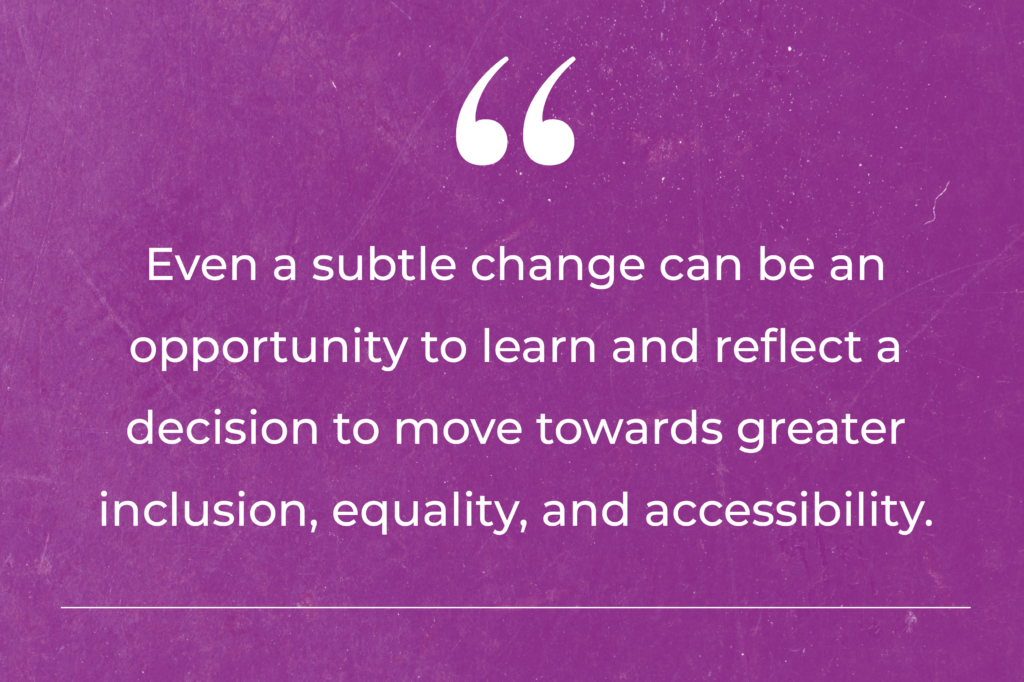
Rebranding Identity
Our priority for rebranding the logo was to make it more accessible to audiences from diverse backgrounds and demographics with visual accessibility as our major focus. The change to our logo may appear subtle to some and major to others. Wherever you fall in your assessment, for our team, this was a significant decision. It showed to us how even a subtle change can be an opportunity to learn and reflect a decision to move towards greater inclusion, equality, and accessibility.
Often when we think of rebrands, we may think of rebranding where the image is completely overhauled or with a complete shift in a logo’s concept entirely. For example, a common rebrand may include a popular candy company rebranding a character. Remember the conversation about “The Green M&M”? She took on a new look but the the M&M’s recipe stays the same.
Rebrands are just a form of change. In changing product packaging, a company signifies a new brand direction. What we are doing at Construct the Present is not that different from this kind of rebrand; we made some significant changes in how we talk about ourselves and how we present what we have to offer the world. Revamping our online design including the logo made sense to improve our brand accessibility while also showing the value we place on change.
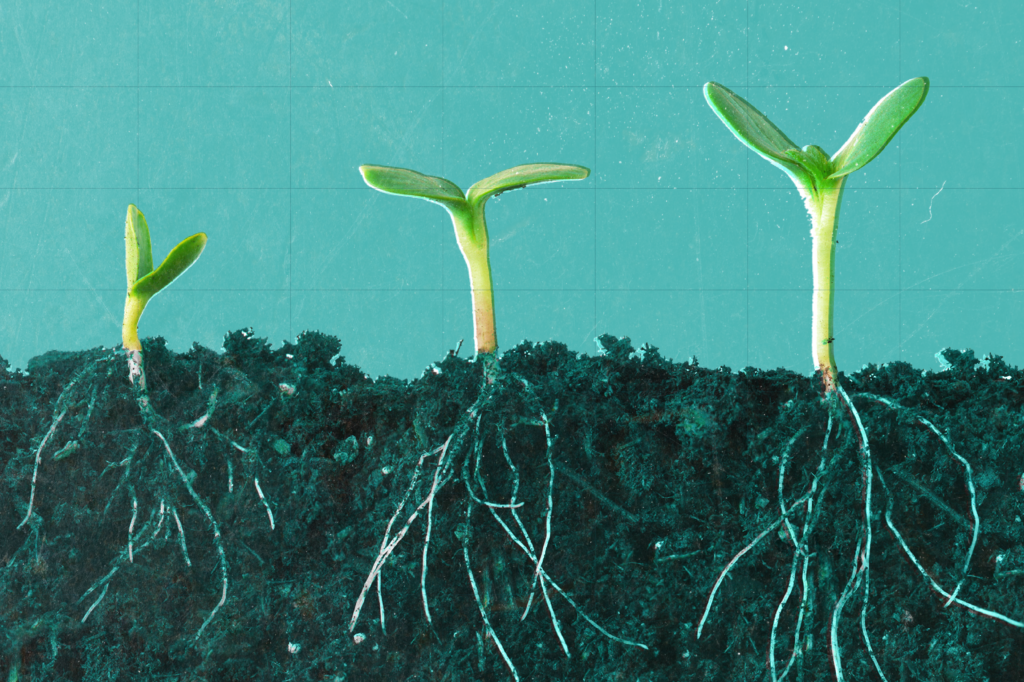
Approaching The Rebrand: Steps and Feedback
We wanted to look to our past to better understand our present so that we could move forward with purpose, clarity, and passion. To do this, we opened ourselves to feedback from our team about how to make our website more accessible for all visitors. Opening ourselves to this type of feedback meant that we needed to embrace change as a necessary part of growth.
Change can at times be uncomfortable. We have strong attachments to our previous brand. All of the hard work and creative energy that went into it made it difficult to move on from it. Yet, we recognize change as work that encourages reflection and learning and we knew that we needed to improve our visual accessibility and clarify our intentions as a team. Most importantly, it matters for how we show up for the communities we want to serve. It matters for the example we want to set. It matters for the trust that clients have in us to make significant and lasting change in their workplaces.
Visual Accessibility and Disabilities
One way we can make significant change is by examining our relationship to disability and accessibility. ‘Accessibility’ and ‘disability’ are used a lot in relation to DEI and for good reason. According to data from the ADA (Americans with Disabilities Act), approximately 57 million Americans have some form of disability. That is roughly one in six Americans. This number helps to make the commonness of disability tangible. And it illustrates that disability is something that all organizations need to take into consideration.
With disability so ubiquitous, it is striking that the visibility of disability and accessibility efforts are not addressed with greater immediacy, compassion, or concern. Rather than seeing disability as something separate from our communities, we need to recognize that it is part of the richness of our teams, organizations, communities, and often of ourselves. Most importantly, we need to meet it with understanding. This is central to the ongoing growth that we can apply daily in our workspaces and personal lives.
Empathetic Strategies to Disability Awareness and Support
When thinking about disability, it’s crucial to lead with empathy and a desire to understand daily lived experiences of disability. When walking around a shopping plaza doing some fun weekend window browsing, do you ever pause to think if there are ramps for those that use wheelchairs? Do you notice when an elevator is out of service in a building where there are many flights of stairs? These are a few daily occurrences that illustrate that common able-bodied privileges are assumed to be the standard experience for everyone when in fact, they are not. To make our communities safer and more inclusive, the work we undertake needs to address these concerns and questions that take us outside our own experience. From there we can think practically about how privileges and needs differ for everyone and begin to think of strategies to address those different experiences.
Just as no two individuals are the same or share identical experiences, the same equally applies to the experience of disability. As we now understand that inclusivity includes myriad factors such as race, gender, and sexual orientation we must also include disability in this framework. Likewise, all of these layers of the individual intersect with one another to create unique lived experiences. Diversity, equity, and inclusion work allows us not only to make space for experience by honoring our differences, it allows us to recognize the particularity of our own lived experience. These serve as pivotal points for connection, growth, and collective building.
In addition to the ability to create connection, difference is also a formidable asset. Alan Joyce (CEO of Australia Airline Quantas) notes:
“We have a very diverse environment and a very inclusive culture, and those characteristics got us through the tough times. Diversity generated a better strategy, better risk management, better debates, and better outcomes.”
To create this responsive culture of innovation we need to foster inclusion. To foster inclusion we must acknowledge and amplify the value of difference. Building such a culture is rewarding. A culture that centers diversity and inclusion places a focus on building and strengthening cultures of connection while honoring the individual.
To have a stronger team built around camaraderie, we look at the ways in which we can cultivate a space that allows each member to not only feel comfortable but to excel with confidence. This confidence is built by valuing who our individual members are, supporting them, and encouraging the unique contributions they bring to the team.
Instilling this confidence within members of your community or workplace does not have to be some insurmountable challenge, but it does require dedication. We need to be receptive to experiences and perspectives that aren’t ours, we must value contributions that we traditionally do not value, and we must prioritize the value of people.
Active and receptive listening will be your MVP in creating this environment. Ask your team how they feel seen and how they don’t. Do they feel safe to bring their whole selves to work? Do they feel safe asking for what they need? What aspects of the workplace culture excludes them in subtle ways? Such questions may feel challenging at first but approaching these questions with openness and understanding allows the answers to come freely and authentically. Be especially open to hearing answers that challenge your perceptions.
Invisible Challenges: Invisible Disabilities and Approaches
A setback that we often face is assuming that people who share traits or identities have the same experience. While two people may have the same disability, due to other social factors their experiences will be different. Allow space in conversations for each individual story to take up space. There is no need to draw instant comparisons and begin creating groups from likeness. That can hinder fully grasping the experiences of others by overwriting their experience with experience that is more familiar and easier to accommodate.
As we noted above, an astonishing 57 million Americans have a form of disability that impacts their lives. Many of these disabilities are visible, such as those who use aids like glasses, wheelchairs, walking sticks, and hearing aids. Glasses are so common you may not even think of them as an assistive support. They are so common that they are considered more fashion than assistance.
A common public misconception is that only noticeable disabilities require assistance, however, the data from the ADA tells a different story. Many disabilities fall under an umbrella known as ‘invisible disabilities’. Invisible disabilities, as the name suggests, are not easily recognized and require different strategies to build understanding and support. If we don’t talk about visible disabilities, how can we begin to discuss and support invisible disabilities?
Invisible disabilities can include, but are not limited to, chronic pain, fatigue, and illness, cognitive disabilities such as ADHD (Attention Deficit Hyperactive Disorder) and dyslexia, and mental illnesses such as depression, anxiety, and bipolar disorder.
These disabilities affect one’s ability to function ‘normally’ in daily life, but also carry an alienating effect. Accessibility of resources is diminished and because the disability is harder to detect or not taken seriously, remedies can be difficult to come by. The challenging experience of living with invisible disabilities is in many cases not due to the disability itself. It stems from a failure to address these needs.
To tackle this challenge successfully, we need to build awareness of the different ways in which disabilities show up for others and understand the way individuals with disabilities navigate the workplace. Adopting an educational and imaginative mindset reflects the values that members, regardless of their abilities, are valued for who they are. Their individual contributions and experiences can help shape an organizational culture that is inclusive of difference. Practicing compassion in the workplace also means prioritizing patience and cultivation of a welcoming atmosphere. Creating this type of relationship is built on mutual trust; the dedication to awareness builds a foundation where allyship is placed at the forefront.
Leading with patience, empathy, and compassion is vital to building the culture of trust needed for communication to flow freely without shame, guilt, or apprehension. Discussing disability can create a feeling of vulnerability that many may find uncomfortable. By establishing trust and emotional safety with empathetic language, the uncomfortable becomes more comfortable. This is a self-reinforcing culture change; as trust and safety make vulnerability feel okay, vulnerable conversations build greater trust and safety.
Cultures of safe vulnerability make it possible to acknowledge the varied needs within your organization and team. Attending to the specifics of experience rather than categorical generalities also instills responsiveness in, which, in turn, increases adaptability. Adaptability is a skill that makes hard conversations easier and makes accommodating individual needs more likely to happen. When individual adaptability becomes part of organizational culture, it makes organizations themselves more adaptable. Of course, this is all more easily said than done, and it requires hard work. It’s helpful to remember when having these conversations that learning is an ongoing process. Conversations don’t need to be perfect to be successful.
The Proof is in the Logo: Shaping Our Logo to Reflect Our Growth
Back to our rebrand. When we designed our new logo, we considered its accessibility, particularly with a focus on visual impairments. About 20 million people in America have some form of visual impairment. With so many affected by visual impairment making our brand more visually accessible was an undertaking.
We reflected on how our logo’s design could be more accessible visually.
“The power of the Web is in its universality. Access by everyone regardless of disability is an essential aspect.” — Tim Berners-Lee
Berners-Lee’s quote speaks to our goals and vision for our rebrand and highlights the special connection between the internet and its users, between us and our audience. How do we embrace universality? For many of us, the internet is an integral part of our lifestyles. It is difficult to imagine what communication would look like without it. The internet has become an indispensable resource, and we should think of it as such.
When we navigate the internet, we tend to use of a lot of sites (I’d be embarrassed to tell you how many tabs I have open right now). Think of all the websites you come across. Are they all easy to use? Does the design pull you in or are you eager to close the window? Do your eyes strain to read it? What works for you visually when it comes to using websites? What doesn’t? How might these answers reflect your own accessibility needs?
We understand that everyone accessing our website will have different needs and will use our website differently. Ultimately what we hope to achieve is that our content is available to all of our users without obstacles. We used the feedback from our team and some visual accessibility best practices to direct our new visual brand. This visual language expresses our values, beliefs and goals.

Stepping Into the Rebrand
Try as we might, we aren’t designers, so to carry out this project we enlisted the assistance of Los Angeles based graphic designer and brand strategist, Olivia Edwards. Olivia’s work on our brand update is where the rubber really hits the road and it reflects key principles of visual accessibility. As she notes:
“A lot of work was put into this. It came about from making sure…the visual and verbal language is inclusive for the current audience and community. For example, how do we reimagine our entire system while making sure components are inclusive down to the fonts? Color palettes, diverse images, graphics that convey the written information? Everything should be integrated into a visual language that reflects an intentional identity.”
Olivia’s work reflects our desire to build inclusive spaces that grow stronger and more connected through diversity and difference. With her work on this campaign, Olivia also remarked upon the progress as “when we started thinking about what that meant for the brand…space accessibility, [that] can mean an accessible website, great color contrast. It’s easy to see it’s deeper than that.” These detail-oriented choices allowed us to reflect on how our brand aligned with our values and where we were falling short.
One example was our previous logo, while colorful, was hard to read and clunky to use on color backgrounds. Some people think you can’t be both creative and accessible, but Olivia integrated both in a way that is community-centered and simple.
We’re sure that we have more work to do to meet the needs of our diverse audience, and this brand update is one big step in our evolution to live our values more fully.
While it is easy to think of a rebrand as superficial changes for the sake of newness, it goes deeper than that. It was crucial for our team to enlist professionals in the community who would challenge us to shift the rebrand into a learning experience for us and those that we work with. As Olivia notes, “CTP is doing the work that’s going to call for deep change and that’s what is needed right now”
When the work itself is an expression of and accountability to core values, anything is possible, even with a small team. We hope that this post sheds some light on our process and showcases how every aspect of our work can be transformative.
Further Resources:
“Accessible Design 101: How to Create Visual Content for Every Audience”
“10 Things You May Not Know About ADA”
“What Is an Invisible Disability”
The Invisible Disability Project
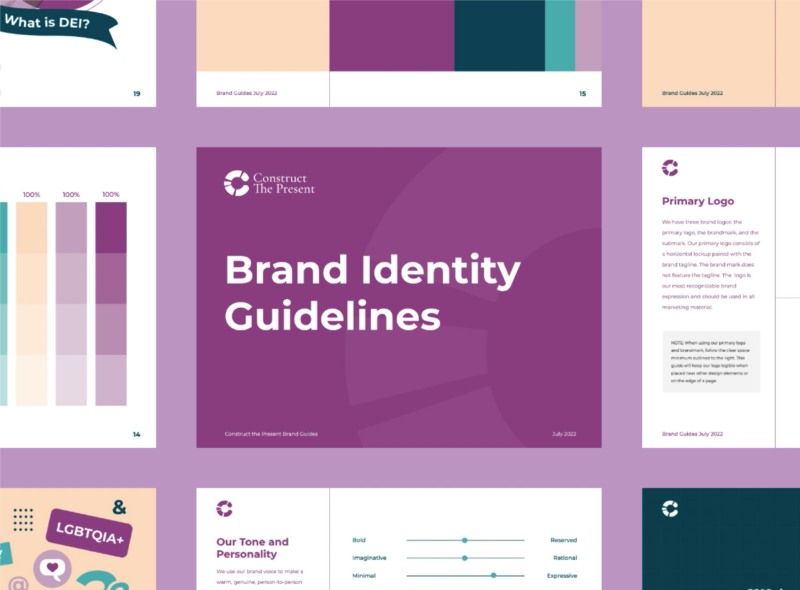
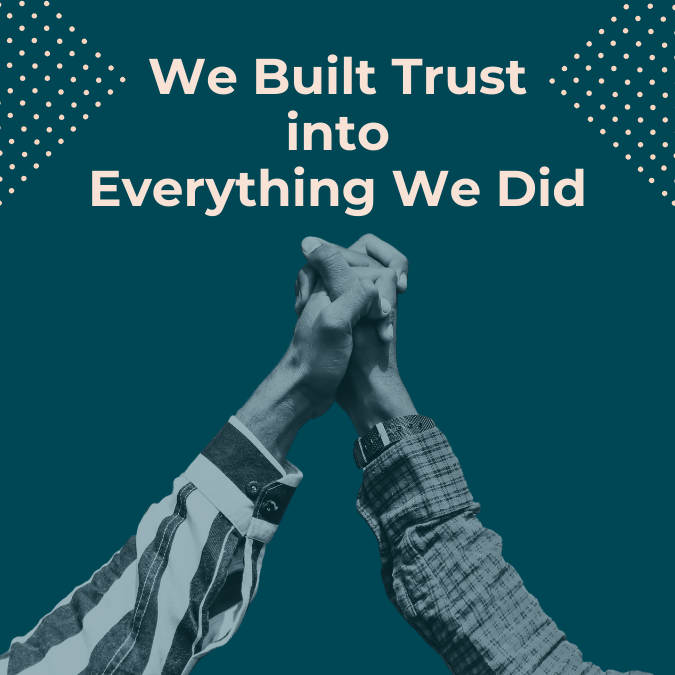
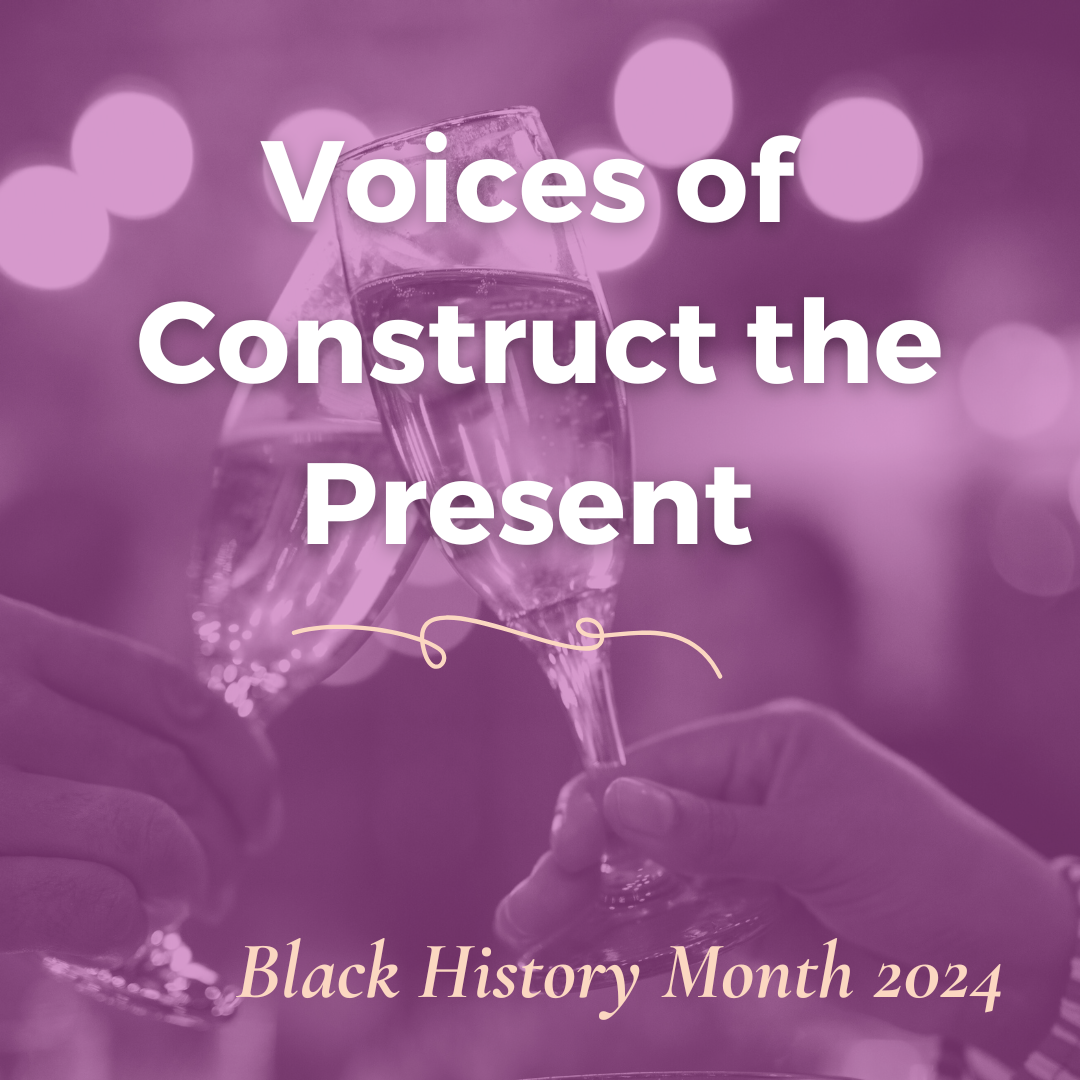
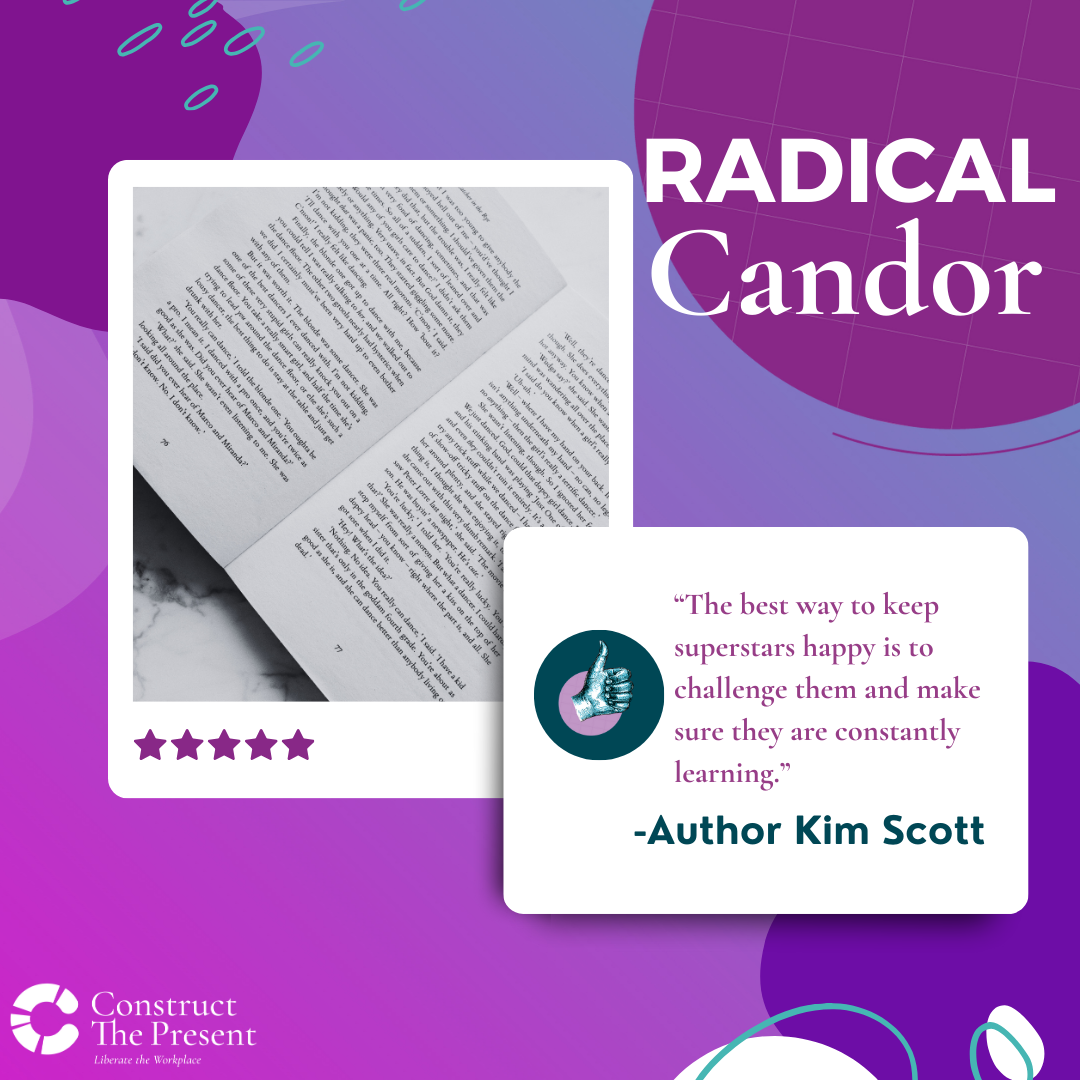
0 Comments